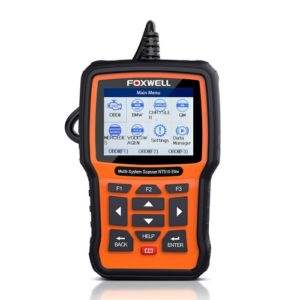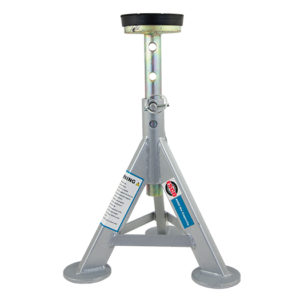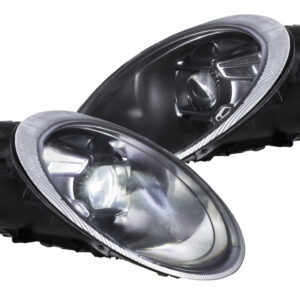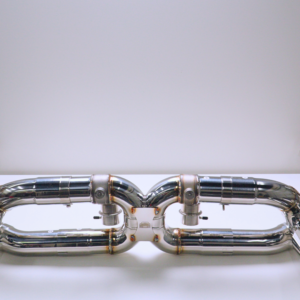When it comes to saving money maintaining your car, changing your own brake pads is one of the best ways. Another thing to consider is whether you should change out just your brake pads or both the brake pads and rotors. Most manufacturers recommend changing the brake pads and rotors at the same time. While we generally agree, if your brake rotors are evenly worn and have sufficient thickness remaining, you can just replace the brake pads.
To perform this DIY, check out this helpful tutorial above from Mechanics Life, for front and rear. Detailed steps can be found below.
Note: This article is not for vehicles equipped with Porsche Carbon Ceramic Brakes (PCCB).
- Mechanic’s Tool Set
- K Tool International Low Profile Jack (3.33 Ton)
- ESCO 10499 Low Profile Flat Top Jack Stands (Pair)
- Slotted Polyurethane Jack Pad
- 1/2 Inch Drive Click Torque Wrench (25-250 ft.-lb.)
- 1/2″ Drive Extension Breaker Bar
- Wheel Chocks
- Impact Screwdriver
- Brake Pad Spreader Tool
- Torx Bit Socket and E-Torx Star Socket Set | 35-Piece
- 10-Piece Triple Square Socket Set, Metric 4mm – 18mm
- Metric Hex Bit Socket Set, 3mm to 10mm
- Medium Strength Thread Locker
- Loctite Silver-Grade Anti-Seize
- CRC Brake Cleaner
- PB Blaster Penetrating Oil
- Safety Glasses
- Respiratory Mask
- Disposable Gloves
- Textar OE Front Brake Pad Set - P/N: 2500701, 971698151E (1 set required)
- Textar OE Rear Brake Pad Set - P/N: 2455402, 97035294905 (1 set required)
- Zimmermann OE Brake Rotor - P/N: 298615301B, 460158020 (front left)
- Zimmermann OE Brake Rotor - P/N: 298615302B, 460158120 (front right)
- Zimmermann OE Brake Rotor - P/N: 298615601A, 460158220 (rear left)
- Zimmermann OE Brake Rotor - P/N: 298615602A, 460158320 (rear right)
- Holstein Brake Wear Sensor - P/N: 2BWS0223, 95861236500 (front brakes, 2 required)
- Holstein Brake Wear Sensor - P/N: 2BWS0224, 95861236550 (rear brakes, 2 required)
- Brake Rotor Set Screw - P/N: 90026904701, 90026904703 (8 new screws recommended)
- Brake Pad Hardware Kit - P/N: 97035195901 (front, 2 recommended)
- Brake Pad Hardware Kit - P/N: 97035295900 (rear, 2 recommended)
Caliper bolts: 63 ft-lbs
Bracket bolts: 7.5 ft-lbs
Wheel bolts: 133 ft-lbs
Step 1: Prepare your work area
- Ensure your car is cool, so you don’t burn yourself.
- Park on a flat surface.
- Put on safety glasses and gloves.
- Gather tools and parts.
Step 2: Extract a small amount of brake fluid from the brake fluid reservoir
- Extract a little bit of brake fluid from the reservoir to prevent it from overflowing during this procedure.
- To do this, open front compartment area.
- Unscrew the brake fluid reservoir cap, remove the mesh filter inside, and extract a little bit of brake fluid using a new turkey baster.
- Save this brake fluid in a clean container, so you can re-use it later.
- Reinstall the brake fluid reservoir cap when you are done to prevent debris from getting in.
- Check out this video from Car Fanatic for an overview.
Step 3: Raise your vehicle off the ground
- You can raise your car one corner at a time or raise the entire vehicle.
- To do this, either use a vehicle lift or a jack and jack stands.
- To put a corner of the vehicle on a jack stand, jack the vehicle using jack points A and place the jack stand under jack points B as shown in the picture.
- NEVER rely on a jack to keep your car up; use jack stands to safely support your vehicle.
- Also be sure to use wheel chocks to prevent your car from rolling.
- Be sure to loosen your wheel bolts before you lift the wheel off the ground.
- Note: If your car has air suspension, disable the leveling system by starting the vehicle and holding the “high level” control for 10 seconds; an indicator will appear in the gauge cluster letting you know the leveling system has been disabled. Failure to disable auto-leveling can result in suspension damage.
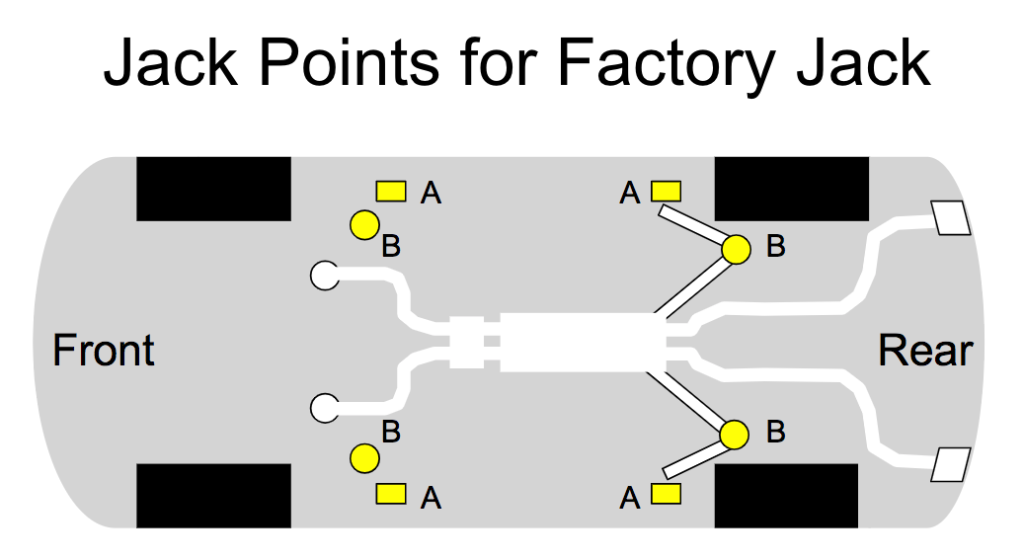
Step 4: Starting with one of the front corners, remove the wheel to gain access to the brakes
- Remove the wheel using a 19mm socket and breaker bar.
- Place two wheel guide bolts to help you remove the wheel.
Step 5: Remove the brake pads
- Before working on the brakes, put on a respiratory mask to avoid inhaling brake dust which is toxic to your lungs.
- Carefully, pull out the brake pad sensor from the brake pad; disconnect the brake pad sensor completely.
- To replace your brake pads and rotor, you will need to remove the brake caliper. Start by removing the brake line bracket which is held on with one 10mm bolt.
- Locate and remove the two bolts that hold the brake caliper; note that Porsche has been known to use Torx, E-Torx, Triple Square, and hex bit bolts, so we recommend you have a set of each handy.
- Remove the brake rotor by wiggling it off the rotor.
- Take string or bungee cord and tie the brake caliper onto the suspension to prevent it from hanging by the brake line.
- Using a brake pad spreader, spread out the brake pads to make enough room for new brake pads, which are thicker.
- Remove the brake pads from the calipers by hand and disconnect the brake pad sensor.
- If you are also replacing the brake rotors, follow the next step.
Step 6: Replace the brake rotor
- Use an impact screwdriver to remove the two phillips screws that hold the brake rotor in place, then remove the brake rotor; if you have difficulty getting it off, apply some penetrating oil to where it meets the hub and leave it for a few minutes, then use a rubber mallet to loosen the rotor.
- Spray brake cleaner onto the new brake rotor and wipe it clean to remove any residue from the manufacturing process; be sure to apply the brake cleaner in a well ventilated area and away from your vehicle.
- Install the new brake rotor; apply anti-seize to where the rotor meets the wheel hub and the brake rotor set screws to prevent them from seizing in the future. Hand tighten the set screws.
Step 7: Install the new brake pads
- Before install the new brake pads, apply brake lubricant around the edges of the brake pad to prevent squealing.
- Insert the new brake pad sensor in from the top of the brake caliper and connect the brake wear indicators to the new brake pads.
- Insert the brake pads into the brake caliper.
- Reinstall your brake caliper; be sure to apply thread locker to the bolts and tighten them to 63 ft-lbs.
- Reinstall the wheel and torque it to 133 ft-lbs in a criss-cross pattern.
- Repeat procedure on other front wheel.
Step 8: Replace rear pads and rotors
- While there are a few differences when replacing the rear brakes, as shown in the video from Mechanics Life, the process is mostly the same.
- Ensure the electronic parking brake is disengaged.
- Repeat the above steps for the rear brakes.
Step 9: Top off the brake fluid reservoir
- With the car still off, pump the brake pedal until it is firm.
- Top off your brake fluid reservoir until the level is between “min” and “max”.
- Reinstall the brake fluid reservoir mesh filter and cap.
- Clean up your work area and you’re all done.

